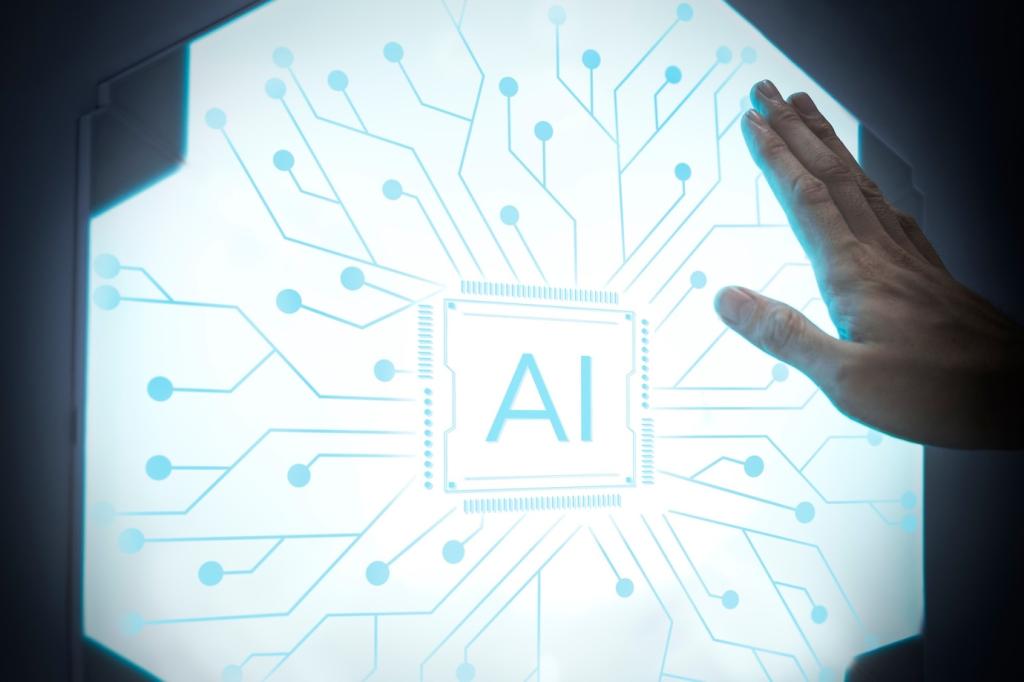The Role of Artificial Intelligence in Revolutionizing Green Energy Technologies
Artificial Intelligence (AI) is rapidly transforming the landscape of green energy technologies, enabling unprecedented advancements in efficiency, sustainability, and innovation. As climate change and environmental concerns mount, the integration of AI into renewable energy systems becomes increasingly crucial. This convergence empowers energy providers to optimize resources, predict energy flow, and minimize waste, leading to more reliable and cost-effective solutions. This page explores the critical ways in which AI is redefining what is possible in the realm of green energy, ushering in a future powered by intelligent, adaptive technologies.

Transforming Renewable Energy Generation
01
AI-Optimized Solar Power
AI is making solar energy systems smarter and more effective through sophisticated modeling and prediction. By analyzing weather patterns, solar radiation levels, and historical panel performance, AI models can predict energy yields with high accuracy. These systems automatically adjust the angles of solar panels and regulate maintenance schedules to maximize output at any given moment. Moreover, AI-driven predictive maintenance reduces downtime and extends the lifespan of panels, making solar installations more reliable and cost-efficient. This level of optimization allows solar farms to seamlessly integrate with power grids, respond rapidly to changes in energy demand, and provide consistent renewable electricity even in less-than-ideal weather conditions.
02
Enhancing Wind Turbine Efficiency
The integration of AI into wind energy systems has dramatically improved the efficiency and performance of wind turbines. AI algorithms process data from sensors embedded in turbines, such as wind speed, direction, and vibration. Using this information, AI can dynamically adjust the pitch of blades and the orientation of turbines to capture the maximum amount of energy from available wind. This real-time optimization not only increases electricity generation but also reduces mechanical stress and maintenance costs, prolonging the lifespan of turbines. Furthermore, AI-based performance monitoring can quickly identify and mitigate potential faults, ensuring the reliability and continual operation of wind farms, even in challenging environments.
03
Hydroelectric Power and Smart Resource Management
AI applications in hydroelectric power focus on optimizing water resource management, predicting flow rates, and enhancing environmental sustainability. By processing extensive datasets on rainfall, river flow, and reservoir levels, AI systems predict peak generation times and enable precise scheduling of water releases. This minimizes energy wastage and ecological disruption, balancing power generation with environmental safeguards like fish migrations and aquatic habitat preservation. In addition, AI can simulate long-term scenarios based on climate change models, allowing utilities to strategize for droughts or floods. These intelligent management practices ensure that hydroelectric resources contribute reliably to the green energy mix while minimizing negative effects on natural ecosystems.
Intelligent Battery Storage Management
AI’s impact on battery storage systems is profound, as it allows for predictive analysis of energy generation and consumption patterns. Machine learning algorithms monitor battery health, charging cycles, and degradation rates with impressive precision. By predicting peak demand periods and renewable supply fluctuations, AI can schedule charging and discharging activity to coincide with both environmental and user needs. This intelligence not only maximizes the lifespan and efficiency of expensive storage assets but also ensures that green energy is available when it is needed most, reducing reliance on fossil fuels and driving progress toward a more reliable, sustainable power grid.
Grid Load Forecasting and Balancing
A major challenge in integrating renewable resources into the grid lies in predicting and managing fluctuating supply and variable demand. AI addresses this challenge by analyzing real-time data from power plants, weather forecasts, user consumption trends, and grid sensors. Advanced forecasting models enable grid operators to anticipate surges or drops in demand, as well as to identify bottlenecks or vulnerabilities. These insights support the deployment of backup resources, dynamic pricing strategies, and energy sharing between regions. The result is a more flexible and resilient grid, able to respond proactively to disturbances and ensure that renewable energy remains a dependable cornerstone of national power supplies.
Predictive Maintenance and Operational Efficiency
Real-time monitoring systems powered by AI can detect equipment anomalies by analyzing sensor data streams for patterns indicative of wear, malfunctions, or potential hazards. These smart monitoring systems employ deep learning algorithms to differentiate between normal performance variations and genuine problems. As a result, operators receive instant alerts about emerging faults, enabling them to intervene before minor issues escalate into significant failures. This approach minimizes downtime, reduces expensive emergency repairs, and improves overall safety, all while enhancing the reliability of green energy facilities—from solar farms to large-scale wind arrays.

